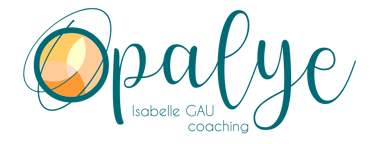Experimenting, Breaking Boundaries: An Opportunity and a Challenge for Innovation in Organizations
What if innovation capacity and attractiveness went hand in hand? Going beyond theory and embracing the concrete, breaking free from the illusion of defining everything in advance and controlling it all in an environment open to novelty—these are the challenges that allow employees to thrive by expressing their full potential and opening the door to new ideas and innovation.
7/4/20233 min read


To learn, evolve, and renew, humans, like all living beings, must experiment and engage with reality. Much like Francisco Varela (Invitation to Cognitive Science, Seuil, 1988), numerous researchers support the idea that experimentation is what allows us to internalize what we've learned theoretically. Similarly, the capacity for experimentation broadens the field of exploration beyond knowledge itself, delving into possibilities, in other words, fostering innovation.
First conclusion: to evolve and innovate, one must step out of classrooms and e-learning environments and into real-life situations. Not that more formal learning is useless; the idea is to give them substance without making them restrictive. Thus, the workplace naturally becomes the ideal learning and innovation environment. For this environment to be productive, it must be open and conducive to discovery. That's where things get complicated... It's evident that the spirit of openness is often stifled by the need to control and oversee everything in many companies. We predominantly remain in a mode where we cling to the illusion of wanting to predict and anticipate everything (even though the unexpected remains omnipresent) and where everyone's attention is focused on adhering to the defined framework: processes devised by central functions, detailed planning, and monitoring systems, reporting at all levels and in all dimensions of matrix organizations. My past as a quality specialist, immersed in all sorts of processes and European safety regulations, taught me well. Despite various attempts to influence the system, I speak today with the awareness of my involvement in the situation and realism about the tyranny of processes, the surplus of indicators that don't serve the operational side, and the cycle of reporting that's recycled without a clear purpose. Besides hindering experimentation, learning, and innovation, this framework fails to leverage employees' full potential in these low-value-added activities. On top of that, what deviates from this framework tends to be seen as errors rather than opportunities for learning, encouraging caution and stifling those with new ideas. It's needless to say that this lack of freedom won't foster employee retention.
Certainly, the framework also serves to provide a common direction, adhere to regulations, and sometimes to reassure in complex and unstable contexts. Hence, striking the right balance, respecting the company's values while not being afraid to challenge itself for differentiation, is crucial. Some companies have made remarkable transitions in this direction. They're called "liberated companies" (Isaac Getz - Freedom, Inc.) or "Teal organizations" (Frederic Laloux - Reinventing Organizations). A notable example in France is the pioneering company FAVI, a Picardy foundry, which dramatically increased its market share in the European automotive industry. Jean-François Zobrist, FAVI's CEO from 1980 to 2009, revolutionized the management system by empowering the frontline workers: the laborers, in a customer-oriented dynamic. This approach heightened worker engagement and unleashed their creative capacity, establishing an open operational mode where individuals freely develop in areas aligned with their activities.
Do we need to go as far as FAVI to unleash potential and creative energies? You might find reasons why this approach might not work in your company. Indeed, such transitions can be intimidating as they disrupt many norms and represent a form of revolution. However, we cannot ignore that they address deep-seated aspirations within the working world and the necessity for companies to innovate and reinvent themselves to stay relevant.
So, where does your organization stand on this trajectory? Each company, enriched by its competence and culture, can chart its own path to reintroduce reality and common sense into more open modes of operation, thereby enhancing the attractiveness of its roles and innovation capabilities.
Do you want to see what this could look like for your company? Let's discuss. There is no one path; there is YOUR path and the strength of collective aspirations.
#innovation #entreprisenouvelle #attractivité #holocracy #trustculture


